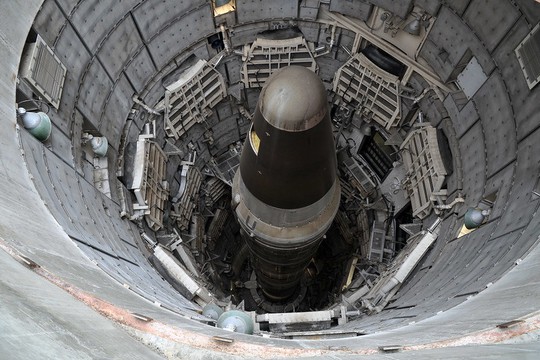For the first time, there is total clarity as regards the high risk of the Ukraine conflict turning into a nuclear confrontation between Russia and the NATO countries.
The strategic ambiguity is ending with the stunning disclosure in Moscow on Wednesday of the emerging contours of Russia’s updated nuclear doctrine at a carefully choreographed meeting of Russia’s Security Council standing conference on nuclear deterrence in the Kremlin, presided over by President Vladimir Putin, and timed on the eve of a crucial meeting between the Ukrainian President Vladimir Zelensky and the US President in the White House in Washington, DC, stresses M.K. Bhadrakumar, Indian Ambassador and prominent international observer.
The most crucial element of Putin’s disclosures is that Russia has reset its nuclear doctrine whereby, as he put it, “Aggression against Russia by any non-nuclear state… supported by a nuclear power (read the US, UK or France) should be treated as their joint attack.”
The implication is that Russia’s patience has run out and NATO’s sophistry to disclaim responsibility for the attacks on Russian territory from Ukraine won’t wash anymore.
Putin further stated that Russia’s transition to the use of nuclear weapons may even be pre-emptive in character. Simply put, deep strikes by Ukraine on Russian territory and attack on Belarus would now trigger atomic response.
The pointed reference to drone attacks is significant, as Ukraine has repeatedly launched mass UAV attacks against Russian strategic bases.
The Kremlin spokesman Dmitry Peskov later acknowledged that Putin’s statements “should be seen as a certain message (to the West.) This is a message that warns these countries of the consequences should they participate in an attack on our country by various means, not necessarily nuclear.”
Peskov added the broader context: “This is related to the security situation that is developing along our borders… It requires adjustments to the foundations of the state policy in the field of nuclear deterrence.”
The work on updating the Russian nuclear doctrine has been underway for several months. Putin announced it for the first time in June. He noted that this is due to the emergence of new elements related to “lowering the threshold for the use of nuclear weapons” by a “likely enemy.”
Putin was referring to the development of “ultra-low-power explosive nuclear devices” by the US in recent period and its testing in an F-35A fighter jet in the Nevada desert. Clearly, the change in the nuclear doctrine by Russia is not intended as an immediate escalation in Ukraine conflict.
The Russian daily Izvestia had reported recently that since 2023, the US began replacing old bombs in its arsenals with new B61-12, including on the European continent, which has a thermonuclear charge with a variable power of up to 50 kt. significantly enhancing the American nuclear capabilities.
The new bomb has become highly accurate — it is equipped with a control system with inertial and satellite subsystems, which, together with a controlled tail section, makes it similar to JDAM guided bombs. Again, its dimensions allow it to be placed in the internal armament compartments of F-35 fighters as well as strategic bombers.
Izvestia wrote: “In general, as a result of the modernisation program, US Air Force is deploying a virtually new and high-precision nuclear bomb. In total, it is planned to produce at least 400 units.” Now, that’s quite a lot, but in 2023, the US launched an even more modern model overseas, B61—13, with a higher power of the thermonuclear charge — at an upper threshold of up to 360 kt.
“Such nuclear bombs have not been placed in Europe before… it is a very aggressive and dangerous modernisation that gives tactical nuclear bombs new properties,” according to Izvestia — ie., a large charge power that can destroy a small city with tens of thousands of victims; high accuracy; and the capability to destroy even highly protected military assets.
However, the announcement of the update of the doctrinal document by Putin comes against the immediate backdrop of discussions in the West around the possible permission from Washington for attacks deep into Russian territory with long-range weapons.
To be sure, the resonance of Putin’s disclosures is sure to be felt in Washington amidst the partisan split already existing. Washington Post reported that when President Biden met with Zelensky at the White House on Thursday, he did not grant the latter’s request for permission to fire American-made missiles deeper into Russia. Instead, he announced the delivery of more military aid and new air defence capabilities, “while rejecting the country’s primary plea.”
Suffice to say, the strategy of incremental escalation pursued by the US (and UK) based on past experiences of muted Russia response has become obsolete and is falling apart. Interestingly, Germany and Italy have openly opposed any strikes deep into Russian territory with Western weapons.
On the contrary, the Russian offensive in Donbass is only intensifying. In fact, the Russian forces have just stormed the “fortress city” of Ugledar in Donetsk, supposedly impregnable, where Ukraine’s elite 72nd Mechanised Brigade is trapped.
In Kursk Region too, Ukraine’s powerful 82nd Assault Brigade, which spearheaded the incursion, is now threatened with encirclement. Russian forces are making battlefield gains all across the 800 km frontline.
The Russian stance continues to be that the war will continue till the objectives are fulfilled.
On September 25, Foreign Minister Sergey Lavrov told TASS in an interview, “Victory is needed [in the war. They [West] do not understand any other language. This victory will be ours, we have no doubt. We have become truly united in the face of the war that the West unleashed against us.”
read more in our Telegram-channel https://t.me/The_International_Affairs

 9:53 30.09.2024 •
9:53 30.09.2024 •























